Yuanyuan Cao (Kiko)
Mail: caoyy1998@hotmail.com
Del: +44 7542590833

Architectural design is a process of constantly solving problems through logical and rational analysis.

Email: caoyy1998@hotmail.com
Mobile: (+44) 7542590833
EDUCATION
University College London (UCL)
Master of Architecture, Urban Design, RC12
Qingdao University of Technology (QUT), China
Bachelor of Architecture, Architecture
EXPERIENCE
Research Assistant
Digital Architecture & Manufacture Laboratory [DAM_Lab]
Job details: Robotic clay printing, robotic foam double curve cutting, 3D printing, digital laser cutting. Joined in the architecture & manufacture experiments and performed some management tasks.
Digital Construction & Woodwork Laboratory, QUT
Job details: Architectural modelling Proficiency in the application of cutting, sanding, drilling, polishing and gluing wood. (See portfolio for pictures of models.)
Research & Workshop
Journal of Asian Institute of Low Carbon Design (AILCD)
Journal Article: Digital Robotic Clay Structure. (Authored with others) Research focused on robotic arm 3D printing of clay for generating architectural curtain walls.
Master Workshop Pezo & Von Ellrichishausen
Project: Painting and Space.
Exploring the combination of architecture and art, using different colours and furnitures to change the feel of the space at different scales, the work is finally presented on a 1.2 x 1.6m panel (See portfolio.)
2019 Bamboo Space Design Workshop, Japan
First Prize | Project: Happo Torii. (Teamwork.)
A sustainable public gazebo built from bamboo and without the use of bolted joints. Involved in the design of the scheme, modelling and cutting of materials. (The University of Kitakyushu)
The 4th International Robot Construction Camp Outstanding Member | Project: Robotic Clay Printing. (Teamwork.) Exploring the applicability of robotic 3D printing clay to architectural curtain walls and testing the impact of material fabrication on print results. (See portfolio.)
COMPETITION
The 5th Bauhaus Award International Design Competition Gold Award | Project: Dormant Pulse. (Teamwork.)
The 11th Shandong University Student Construction Design Competition Excellence Award | Project: Under the Dome. (Teamwork.)
The 3th Bauhaus Award International Design Competition Gold Award | Project: Qingdao Olympic Sailing Museum Design. (Teamwork.)
The 10th Shandong University Student Construction Design Competition Excellence Award | Project: Wave of Tiles. (Teamwork.)
SKILLS
Language:
Mandarin (native), English (proficient)
Software Skills:
Design software:
Rhino Revit
Grasshopper
Unreal
CAD
Sketch-up
Maya
Sep 2021-Sep 2022
Sep 2016-Jul 2021
Adobe:
Photoshop Illustration
InDesign
Rendering software:
Rhino for Vary
Lumion
Enscape
Twinmotion
May 2019-Jul 2021
Mar 2018-Jul 2021
Feb 2020
Jul 2019
May 2019
Apr 2019
Mar 2020
May 2019
Oct 2018
Sep 2018
Yuanyuan Cao Kiko

01 “1h" copolymer
The possibility of establishing a fictitious city management mechanism and demonstrating its results
Date : 2020.11 - 2020.12
Site : Mumbai,India
Individual Work
This project studied, following the current information society, under the imaginary social form of "time society", what kind of state will the city evolve into? And if the architect in the future is a revolutionary, how to balance the class oppression from the "time society" for the slum people at the bottom of the society, and build an ideal world that can survive and satisfy basic human rights and desires.
The world background of the project comes from the "time supreme" social system in the film "In Time". This design takes Dharavi slums in Mumbai, India as an example, and tries to analyze historical cases of "social forms affecting urban evolution". Explain the possibility of fictional city management mechanism and show its deduction results. In the city of the future, the construction of Dharavi’s "1h polymer" will save the poor in society an hour of survival time to satisfy their desires. It not only meets the basic sustainable survival and equal human rights at the bottom, but also establishes a revolutionary foundation for the formation of a new ideal city that is inclusive, diverse and equal.
Through the extraction, classification and translation of the living space elements of the Dharavi slums, the spatial prototype of "how to satisfy these basic living functions in the shortest path" is studied, the spatial sequence is reorganized, and an infrastructure system is established. This creates more survival time for the people in the slums than in the old space, which is used to make up for the spiritual world that is missing in the life of the two points of work and survival. Therefore, in addition to living space and manufacturing plants, the "polymer" has also added religious centers, music stages, cultural theaters and other facilities to build a diverse living space.
Michel Foucault
A history of space is necessarily a history of power.
political
political superstructure
Henri Lefebvre
As the inter-society and society are mutually constructed. all social phenomena are bound to shape spatially.
Karl Heinrich Marx / Friedrich Engels
ideological superstructures
superstructure
Urban socio-spatial Socialism

socio-economic background
social status living condition lifestyle
economic income consumption patterns
economic basis
Human society can be divided into five social forms: primitive society , slave society , feudal society , capitalist society , and communist society ( socialist society is the lower stage of communist society). Looking at these ages from another Angle, it presents a sequence of technological society forms: fishing and hunting society -- agricultural society -- industrial society -- information society.
Fishing and hunting society
Clan society is linked by family affection. Due to low productivity and public ownership, products are distributed equally.
Information society
The information society is also called the information society, which is a society where information will play a major role after leaving the industrialized society.
All tribes are equal and gather in blocks along the river.
Planning Building
Cave dwelling and nest dwelling.
Agricultural society
The income of agricultural products is stable, the productivity is high, the surplus products appear, the production system is private.
Planning
The capital is centered on palaces or churches, with a high degree of political concentration, and the city has a clear axis.
Building
Buildings are divided into levels, and different aristocratic classes use buildings of different construction styles.
Counterurbanization:Counter-urbanization, the collapse of centralization, the emergence of multiple centers.
Planning Building
The emergence of intelligent construction and intelligent buildings, the use of buildings is combined with intelligent information control
Industrial society
Machines brought higher productivity, concentrated industrial production in cities, and caused a vicious population expansion.
Planning
Urbanization
With industrial enterprises as the center, workers gathered to form a complete village and town, the city gradually became larger, and the large factory city grew rapidly.
Building
1. New materials, new technologies, and new types of construction appear. High-rise buildings and large-span buildings have emerged.
2. slums
Cities have become crowded, workers have gathered in large numbers, housing shortages have occurred.
3 ORIGIN
Broadacre City intelligent building Garden Cities
forbidden city , China Home Insurance Building Musée du Louvre , Paris Birmingham, slum
The project was inspired by the dystopian film "Time Planning Bureau". In 2050, the time society will come. If the time for labor is not enough to support the basic survival time, people will die immediately because of "overtime". Therefore, time becomes a universal currency, which can be transferred or stored in the time bank. The efficiency of society has become extremely important. Reflected in the evolution of the city: traffic has become extremely developed, high-rise buildings and residential units have become aggregates, industry has evolved into aggregates of intelligent manufacturing, commercial advertisements on the streets have disappeared, and the excitement of the past is no longer .

4 INSPIRATION
Hall + Smart Factory
People in the slums enter the aggregate through here and see the pictures of the city in the lobby. The remaining part is the intelligent industrial operation area, where the input and output of industrial materials are carried out.
Workspace
According to people's virtual operation behaviors in 2078, the most efficient form of office is an independent space, manufacturing industry below.
Living Area + Entertainment Area Top Theater
The living area uses modular 3*3 as the unit to generate different apartment types, and the capsule elevator in the core tube connects the living and working areas. The entertainment area is more flexible and contrasts with the living area.
The top floor is a theater that symbolizes culture. Not only high-efficiency society but also the revolutionary ideas

5
PLAN
2078, it can be deduced that space, which operates the
only the human culture in the are promoted here.

6
HALL VIEW

02 Connect the old and new
Explore the rebirth of abandoned brick factories after relocation in the post-industrial era
UIA-HYP CUP 2019 COMPETITION
Date : 2019.08 - 2019.10
Site : Qingdao,China
Individual Work
This project studied how to connect the old memory information inside the site with the new functions and life in the face of the activation project, so as to give the site new life.
In the context of China's post-industrial era, large areas of factory buildings have been relocated and rebuilt, and the original site in the city center is facing a new reorganization The urban planning around the factory has shifted from industrial land to commercial and residential land. Factory workers who were originally resettled and new residents who moved into the area became the main crowd. On the one hand, the spatial memory of factory workers needs to be preserved; on the other hand, the demands of new residents for community space also need to be met.
The project uses a series of continuous architectural spaces to connect memories and new functions.The structure and walls of the original factory are retained, and the internal space relies on the new continuous space to establish new functions—the brick factory historical exhibition and community activity center. The tour route coincides with the previous brick production line, and retains the most distinctive features: "tunnel kiln", "inverted flame kiln", "drying workshop", and "air transmission corridor" four spaces, these parts have also become the site The most distinctive node.Community activities revolve around the history of the brick factory, with some exhibitions and workshop experiences.

9

10
We can participate interesting workshops. materials here, we can make interesting things to take
On weekends, we can come here to relax and learn about the development history of bricks. In addition to learning knowledge, we can also make something by ourselves. In the community center, you can sit on the big stairs and chat with everyone.

11 AXON VIEW

12
INTERNAL VIEW in some Using the make some home.

“Feel the sea”
Explore the museum space design of multi-dimensional five sense experience
Architecture design II (A)
Instructor : A.P Cheng Ran
Date : 2018.10 - 2018.12
Site : Qingdao,China
Individual Work
This project explored how to transform the abstract "coastal city culture" into a more perceptual architectural space experience in the museum design. Because with the evolution of museum functions in historical development, contemporary experiential architectural spaces have brought people a strong value identity, and the function of museums has also evolved from a one-dimensional exhibition to an experiential cultural consumption. The future museum building needs to bring more dimensions of space experience.
The site is located in Qingdao, China, an important coastal port city, which has a longterm connection with the sea. However, Qingdao has always lacked the experience of seawater culture. For more tourists from the inland (never touched the sea), they need a more dimensional experience to deepen the impression of the sea and Qingdao. Therefore, it is planned to be in the Olympic Sailing Center Port. On the ground, this problem is solved by building a museum of multi-dimensional perception and experience.
Based on the research on the perception of seawater culture, the program proposes a prototype of the architectural space corresponding to the four perceptions of sight, hearing, touch and smell. Vision: sunlight and sailing boats by the sea, hearing: sound of flowing sea water, touch: foot on the beach and touching running water and rough reefs, smell the smell of the sea through the openness of space. The space creation is dominated by the demand of public experience.
03
HISTORY OF FIVE SENSE EXPERIENCE IN MUSEUM
bc.283 - Renaissance
Cultural heritage
To preserve and inherit historical civilization for mankind
18th century - 19th century
Cultural symbol
National identity and cultural achievements
Hearing
SITE ANALYSIS
The venue is located in the port of the Olympic Sailing Center, the most famous scenic spot in Qingdao. The sea view around the venue is very open. However, Qingdao has always lacked a place to experience seawater culture up close. The site is located at the end of the port, in front of which is a long walking distance. It is suitable for tourists to experience the sea culture and appreciate the landscape.
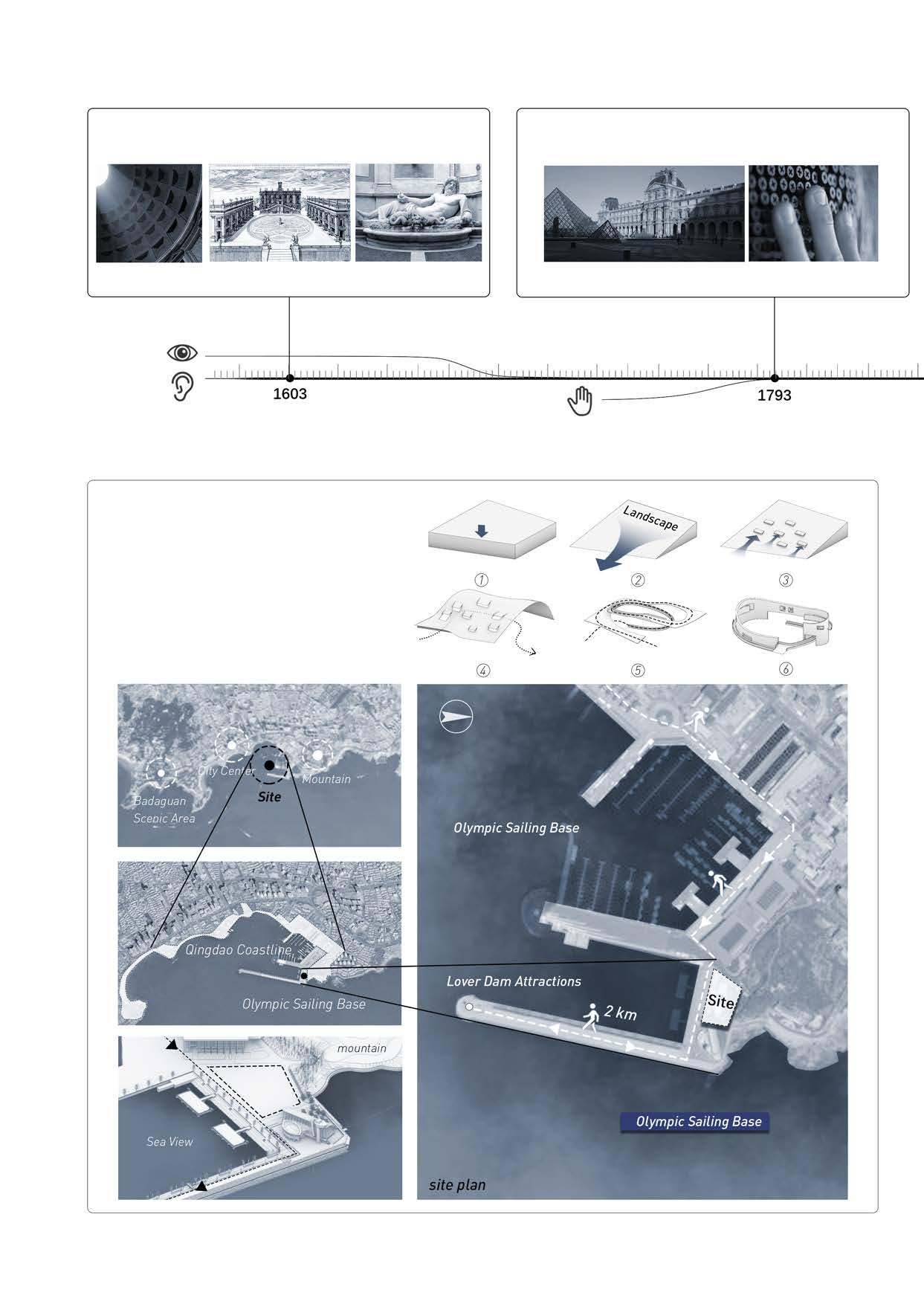
Touch
15
Pantheon c.125
Vision Statues, hanging frescoes.Holy table, echo wall.
The Capitoline Museums 1603
the Louvre Museum 1793
The museum goes to the public and the artwork is touchable.
19th - 20th Century
Cultural capital
Consumption by society has the potential for value-added, combined with commercial development and tourism and cultural industries
FUTURE
Public experience demand dominates space creation
PROPOTYPE OF FIVE EXPERIENCE
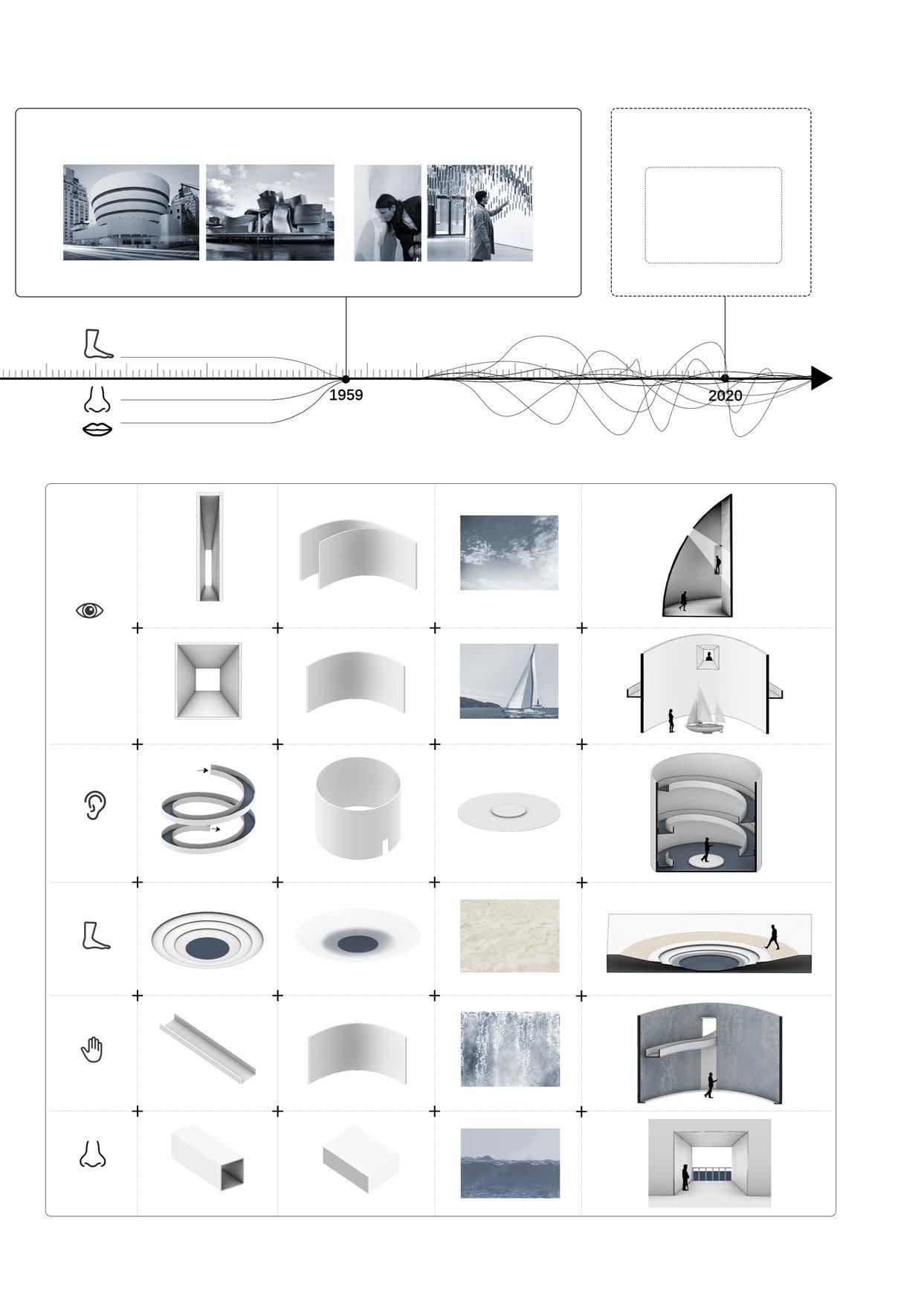
16
Ramp walk to observe the exhibits.
Enrich people's experiences based on themes. Perception
Smell Taste
Solomon R. Guggenheim Museum 1959 Bilbao Guggenheim Museum 1997 MOMA 2013 Galerie Joseph 2017
Curved
Sunshine Sailboat Curved wall Window
Circular
Platform Sand Slope Steps Window hole Outreach balcony Curved wall Small space Water curtain Sea view( D<1000m )
Touch Smell
Narrow space
wall
Ramp (water)
space
Vision Hearing Perception
Ground floor plan
1,Museum entrance Hall
2,Storage
3,Tactile space
4,Auditory space
5,Equipment room
6,Museum coffee
7,Rest space / Temporary exhibition gallery
1st Floor plan
1,Visual open space
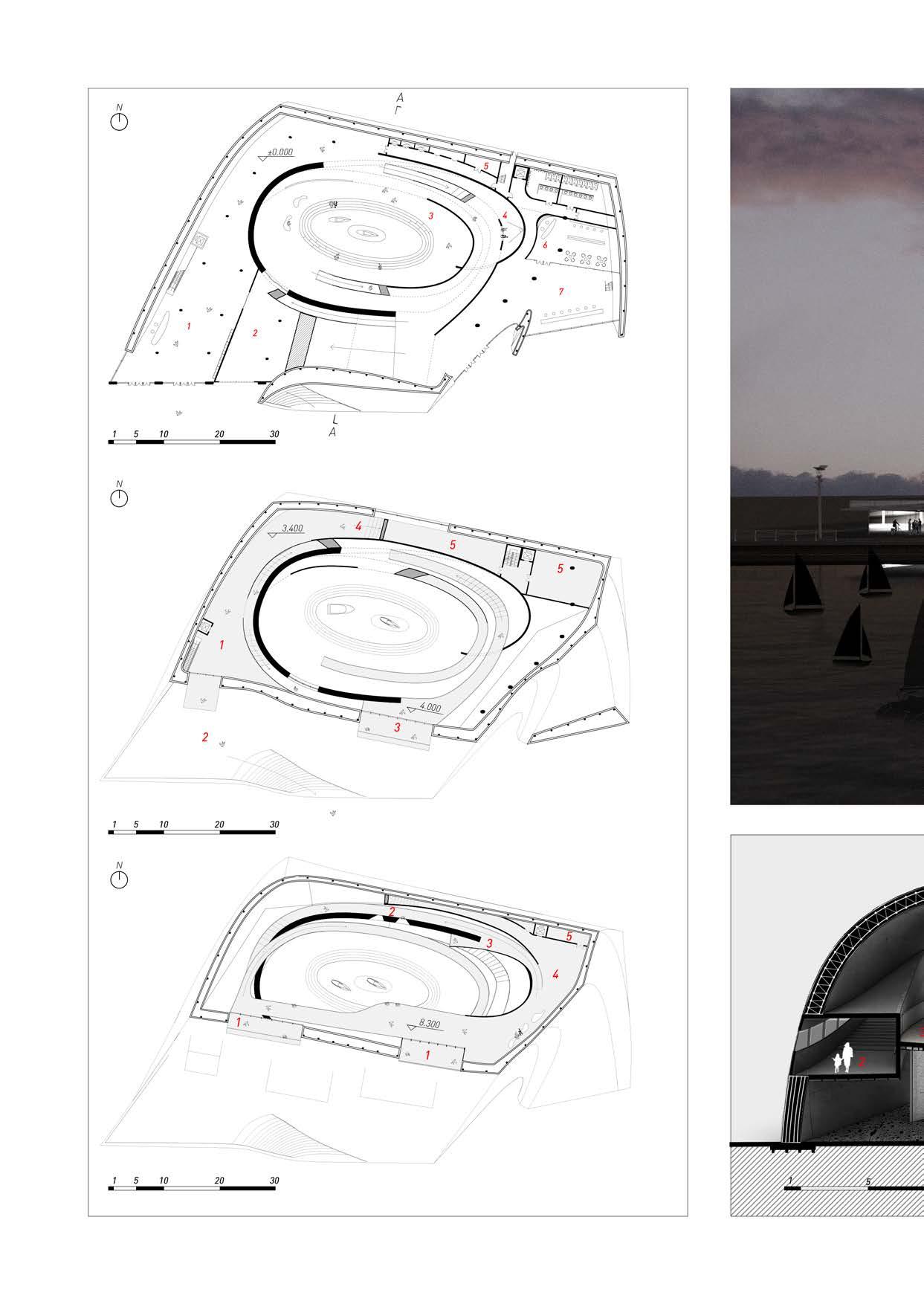
2,Sea view platform
3,Olfactory space
4,Visual narrow space
5,Office space
2nd Floor plan
1,Olfactory space
2,Visual window
3,Visual narrow space
4,Projection room
5,Equipment room
17
PLAN NIGHT VIEW SECTION
1,Tactile space
2,Visual narrow space
3,Visual window

4,Visual narrow space
5,Olfactory space
6,Export
18
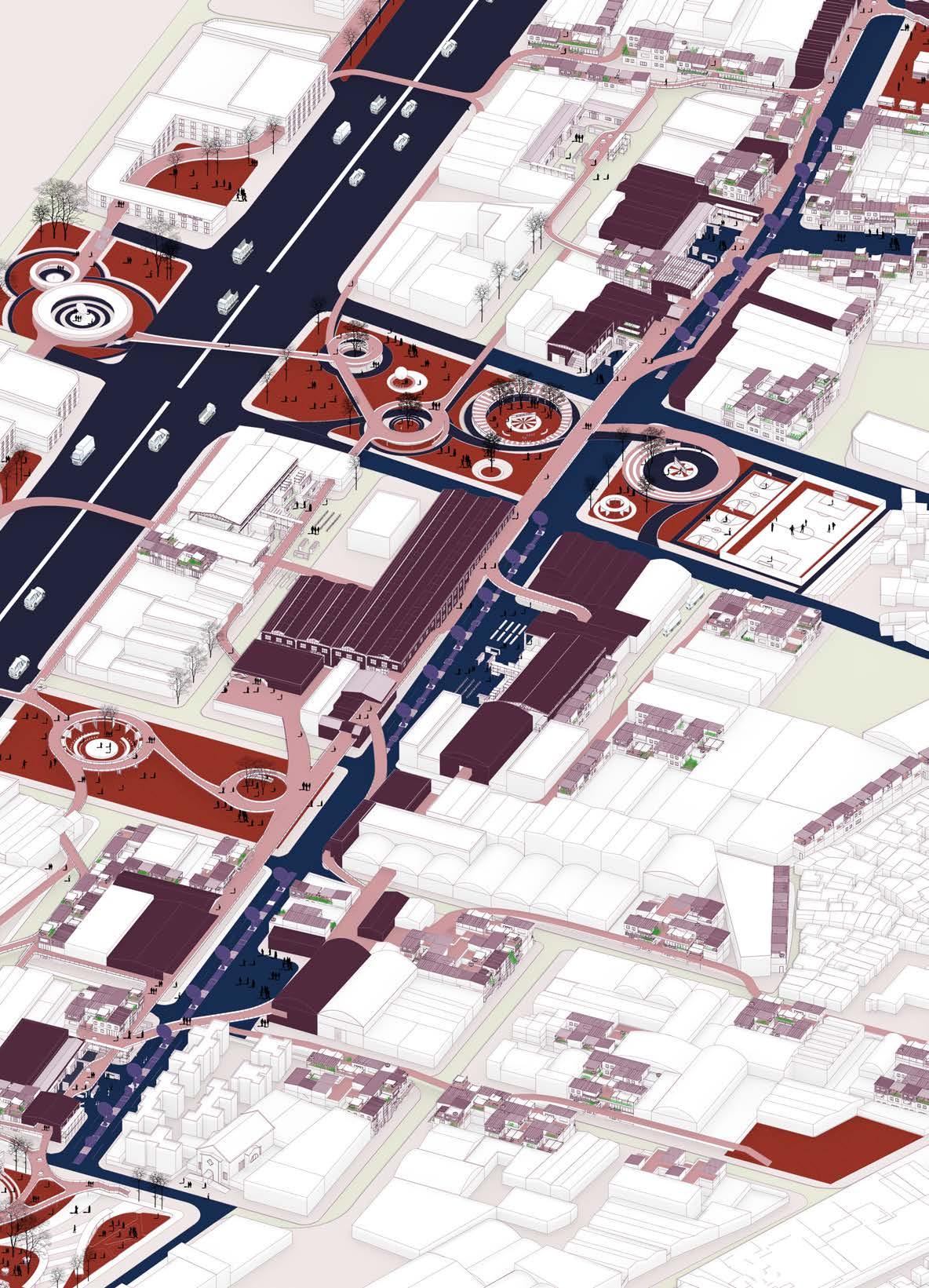
04 “A co-starred drama”
Explore cultural self-production through an immersive experience involving all people
UIA 2021 RIO Maré-City Competition
Date : 2020.04 - 2020.07
Site : Rio,Brazil
Individual Work
This project studies how to generate a sustainable economic cycle through the cultural activation of all citizens in slums, so as to improve the problems of slums and improve the urban differences in Brazil.
When thinking about urbanism and plural and inclusive cities, we can no longer disregard the territories occupied by self-built housing made by low-income social segments. Such territories, widely known as slums, are a substantial part of Rio de Janeiro for over a century. Through research on Rio's slum“Mare”, it is found that the low-income people here generally lack formal jobs and stable income, which has caused the land they occupy to become the fringe area of the city, facing water shortages and lack of public buildings. In addition, residents and Ngo groups frequently conduct educational and artistic activities in this area, but the venues are limited and the scope of influence is small.
This project provides a business strategy that links the common interests of multiple participants, transforms the original factories and residential buildings on the site, and establishes a sustainable economic activation site. The east side of the highway forms a cultural and commercial block based on the original advantages. The narrow strip on the west side of the highway forms a cultural display and supplement area. This solution not only solves the existing problems in the site, but also realizes the integration between the city and the slums.
Exploring the concept of sustainability in architecture provides a key response to the spatial differences and social polarization of the city, trying to find a suitable architectural expression and promoting the diverse development of slums to become a recognized part of the city.
RESEARCH
The main problem of slum dwellers is that they gather to form slums because of low work income. The rich cultural activities in the site can attract foreigners to use the original independent business foundation to make this an economic activator.
NGO
Resident Association Forum(FAM)
Right to public security
Get funds from bank foundation
Handicraft making
Public kitchen
Film screenings
Workshop
Education popularization

Farming experience
Graffiti
Sports
Dance performance
Photography exhibition
Food Industry
Clothing brand
Record
Sports brand Transportation industry
21
People Flow Basis Rich Cultural Activity slum dweller Rich personal shops no money no work
ROAD 9 BUS PLOT
3
Government
merchant
Tourism developer Brand
Factory entrepreneur
sustainability Activity update Brand update tourist Adaptive living Industrial factory Abandoned factory Folk house 15% area transfer Penthouse Shops along the street Indoor cultural activities promote couple family group single the elderly promote 50% area transfer
University scholar Artist Media Economic
Landscape green park
First Creat an express line.Build a cultural exhibition green park and a activity center.
STRATEGY
Through the reuse of abandoned factories and used factories in the site, as well as the transformation of residential buildings.
shops
Second Build a walkable commercial street And some node parks.
Factory renovation on commercial street.
local residents own residences along the street
training
academic research and practice

Building roof folklore
Third with the increase of tourists, there is a demand for homestays.
22
MARE Resident Activity Center
Renovation of
along the commercial street.
NGO slum dweller tourist
tourist pre-job
government government
government
tourism developer tourisit
brand merchant entrepreneur land transfer more audiences,profit distribution shop venue certain compensation
The residences are located in the slums (the residence is not along the street)
tourism developer
ECONOMIC SUSTAINABILITY (House)

The
use
How
23
houses: A family Two families
module: Quiet Homestay
of catering and hotel
of rooftop bar and hotel
business models: Quiet Homestay
of rooftop bar and hotel
usual size of local
Single
Combination
Combination
Five
Combination
to use 50% Roof space to
economic sustainability:
Merchant
exhibition, clothing...... Store brand update Audience age Bar ? Catering ? Party ? ...... ? time
of catering and hotel small hotel the interactive hotel small hotel the interactive hotel the elderly family group single couple
achieve
Brand
Artist
Combination
50% Roof space to achieve site mode F1 F2 F3 habitation bar hotel habitation hotel Inside the area Along the street hotel restaurant restaurant hotel hotel shop shop shop habitation habitation 50%
PEDESTRIAN SHOPPING STREET
When walking in a commercial street, in addition to feeling the commercial atmosphere on both sides, you can also interact with the people in the houses. The plan makes full use of the roof space. The Brazilian slums are called jale. In the past, these platforms were mostly used in slums. Residents build by themselves, and now through reasonable planning, in addition to installing a homestay suitable for five types of people on the high-rise platform, the abundant rooftop activities also attract tourists who live here.

24

05 Clay Curtain
Explore the use of clay materials in 3D printing (Digital Fabrication)
Team Work
Workshop:The 4th International Robot Construction Camp
Date : 2019.04-2019.08
Site : Qingdao, China
Supervisor Professor : Xinyu Shi, Zhoufan Chen, Da Wan role in team : conceptual design, modeling and drawing, photo Pubuication:Journal of Asian Institute of Low Carbon Design, 2020
Clay printing has the same characteristics as 3D printing, and the construction concept of generating forms is mainly stack printing. By thinking about how to combine the printing of clay with the application of actual building construction, it can be applied to the building curtain wall system by utilizing the characteristic of diffuse reflection on the surface porous holes. By changing the orientation, size and density of the openings of the layered print, the intensity of sunlight entering the building through the curtain wall is controlled.
We found that in the 24-hour working environment of the American Emergency Alarm Center, it is required that the computer screen cannot produce any reflection, so as not to delay the viewing of any emergency alarm information. Therefore, in order to prevent the computer screen from reflecting on the computer screen because of the existence of natural light sources, it interferes with the office. Therefore, the wall of the building is generally closed, and artificial light sources are used throughout the day. This not only increases office pressure, but also Mental health also has a huge impact. Therefore, we hope that the porous surface of the clay surface can form the characteristic of diffuse reflection and apply it to the building curtain wall system. It can work without introducing reflection interference to the computer screen while opening the external field of vision, and introducing natural light sources into the room.
This solution can be applied in the transformation of the office environment. In the office environment of the emergency treatment center, in order office exterior walls increase the pressure on the staff. By applying the clay panel of the scheme to the curtain wall, by controlling the orientation, and relying on the upper part of the sunlight. Shooting indoors does not interfere with computer screens that require 24 hours of work.

CONCEPT ASSEMBLY
Each piece of 600mm x 600mm size is connected to each other by steel members. The four-sided steel is fixed like a frame to prevent the clay panel from being damaged by shear. Each panel is bolted together with two angles. In this detail we have thought of two detail treatments. One is to reserve a circle for the clay panel when printing, and clamp the edge with U-shaped steel. The other is to connect them by angle steel.
27
General curtain wall
caly print of the curtain wall
order to avoid the reflection interference caused by the direct sunlight, the large-scale use of artificial light sources and the application of closed orientation, height and opening size of the voronoi polygon rotation, the lower part of the sunlight enters directly, creating a good office environment

SHAPR GENERATION
On the basis of the Thiessen polygon, each layer is rotated uplifted, and each height is raised by 3mm (that is, the thickness of a layer of clay), and the next shape is reconnected at a distance of 5% from the side of each polygon. The secondary loop gets a shape with smaller and smaller aperture.
Monomer
panel 1
Circular interference
Rotate 1 panel 2 panel 3
Linear interference
Rotate n
Curve interference
28
PROGRAM OPTIMIZATION
When printing each Voronoi diagram, there are five points of the robotic arm to run. The first point coincides with the fifth point. The robot arm recognizes the point-to-point path. We turn on the air pump at the 0th point. At the 4th point, the air pump is turned off and the clay extrusion is stopped, and then the fifth point is returned. This is to prevent the clay extrusion from accumulating at 0 th point, so stop the mud at 5 mm from the fifth point.

After printing one layer of a single unit, the mechanical head is lifted 2 cm and then lowered to the specified point to print another layer of monomer.
The optimized route is mainly "Z" shaped route, which reduces the initial layer step to 42 steps and greatly shortens the printing time.
MECHHANICAL ARM OPERATION
Problems encountered:
1. The progress of clay printing cannot be known.
2. The amount of clay in the metal tube cannot be followed up, and it is easy to run out of clay in the printing process. In order to prevent the use of clay in the printing process, a multi-tube connection is realized by a tee.
29
LIN {E6POS: X -42, Y 5586, Z 278, A 0, B -90, C -90, E1 3500, E2 0, E3 0, E4 0} C_DIS LIN {E6POS: X -42, Y 5586, Z 298, A 0, B -90, C -90, E1 3500, E2 0, E3 0, E4 0} C_DIS LIN {E6POS: X -42, Y 5735.748, Z 298, A 0, B -90, C -90, E1 3500, E2 0, E3 0, E4 0} C_DIS LIN {E6POS: X -42, Y 5735.748, Z 278, A 0, B -90, C -90, E1 3500, E2 0, E3 0, E4 0} C_DIS
THINKING ABOUT ROBOTIC ARM
Through the design of this scheme, we clearly realized that the robot arm will play an important role in the future building construction environment, and can effectively assist people in customizing the corresponding personalized building design and customization, and contribute to the development of human civilization.

30

06 Meta Consumer
Explore the development of commercial spaces in the Metaverse
B-pro Show 2022,RC12
Date : 2021.09-2022.09

Site : Oxford Circus, London Team Work
Tutor: Luke Pearson, Sandra Youkhana
Team members: Xiaolin Liu, Han Wei, Shaoyu Wang
Meta Consumer explores how the metaverse and virtual worlds are economic sites for content production and consumption. Combining studies into consumer behaviour alongside the analysis of ‘gamer types’ using Bartle’s taxonomy of players, MetaConsumer creates experimental retail experiences, leveraging how people instinctively engage with virtual environments.
The game is constructed around a system of agents containing both consumer and gamer profiles.
Players must create structures that appeal to both the consumerist tendencies of these shoppers and the ways they are predisposed to interact with virtual environments, using combinations of different generic elements which then become attractive to agents based on their personality type. ‘Killer’-type players, who thrive on competition, will be attracted to vertiginous structures inspired by games such as Doom Eternal. In contrast, ‘explorer’-type players will seek out structures providing unexpected journeys, drawing upon the aesthetics of games like Minecraft. As players perceive game worlds in fundamentally different ways according to their personality, MetaConsumer uses this in a shifting landscape of experiences and consumption.
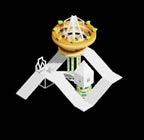
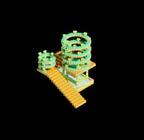






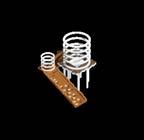
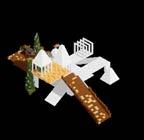


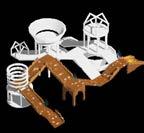





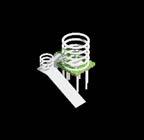

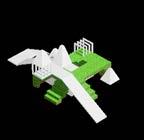










COMPONENTS RENDERING 33
Players acting as retailers combine different basic architectural elements into spatial forms that attract different player types. These will then be perceived and explored by consumers within the game. Studies into how different player types are attracted to different spatial forms. Killer-types, looking to dominate their surroundings, will be drawn to high ground or difficult objectives, while explorer-types will seek out branching paths.
An in-game screenshot of a MetaConsumer environment, showing elements that are being perceived and explored by the different player types corresponding to different game types, and 'blank' structures that are not currently being visited. The MetaConsumer environment is one that oscillates in and out of meaning, with the world physically changing depending on the player personality type of the user experiencing it.

34
NS_Achiever


NS_Explorer

NS_Socializer

Spawn Actor From Class
SimpleAgent E
SimpleAgent A




SimpleAgent K
SimpleAgent S
Move to Destination
(Random)

Explorer_Destinations
Achiever_Destinations
Killer_Destinations
Socializer_Destinations
Overlapping actors = Corresponding types ?




Destination Actor
Trigger Box0
DATA MECHANISM
NS_Killer
35
























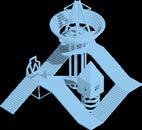
















Spline = Route SimpleAgent E SimpleAgent A SimpleAgent K SimpleAgent S Set Visibility Set Visibility Access to component Set World Location Animation Purchasing (Dancing) Overlap box1 Set Visibility Set Visibility No No No No YES YES YES YES 1 second 1 second 1 second Trigger Box1 Move to Des Set Visibility Set Visibility Socializer_Destinations Killer_Destinations Achiever_Destinations Explorer_Destinations GET False Ture Is the agent type the same as the component type? (Random) Purchasing Faster switching of lights NS_Killer Niagara Particle System Add in Array Does the track correspond to the character ? No YES Set Pasued Niagara follows the characters type number index number 0 1 2 3 36

07 Other works
Explorations related to construction and arts
1.Joint Practice Design
Project: Rest around the tree
Time: Aug2018
Site: Qingdao,China
Role in team: leader,conceptual design,construction,operation made in Woodwork laboratory
2.Structural Design
Project: Argi Chapel
Time: Mar, 2019
Site: Qingdao,China
Role in team:construction,modeling and drawing made in Woodwork laboratory
3.Workshop:Pezo & Von Ellrichishausen
Project: Painting and Space, Individual Time: Aug, 2019
Site: Nanjing,China
Joint Practice Design
Made in Woodwork laboratory
Project: Rest around the tree

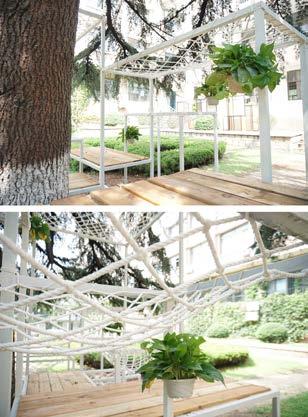
Time: Aug, 2018
Site: Qingdao,China
Role in team: leader,conceptual design,construction,operation
39

40
Structural Design


Made in Woodwork laboratory
Project: Argi Chapel
Time: Mar, 2019
Site: Qingdao,China
Role in team: construction,modeling and drawing
41

42
Yuanyuan Cao (Kiko)
Selected Work 2016-2022
























































































